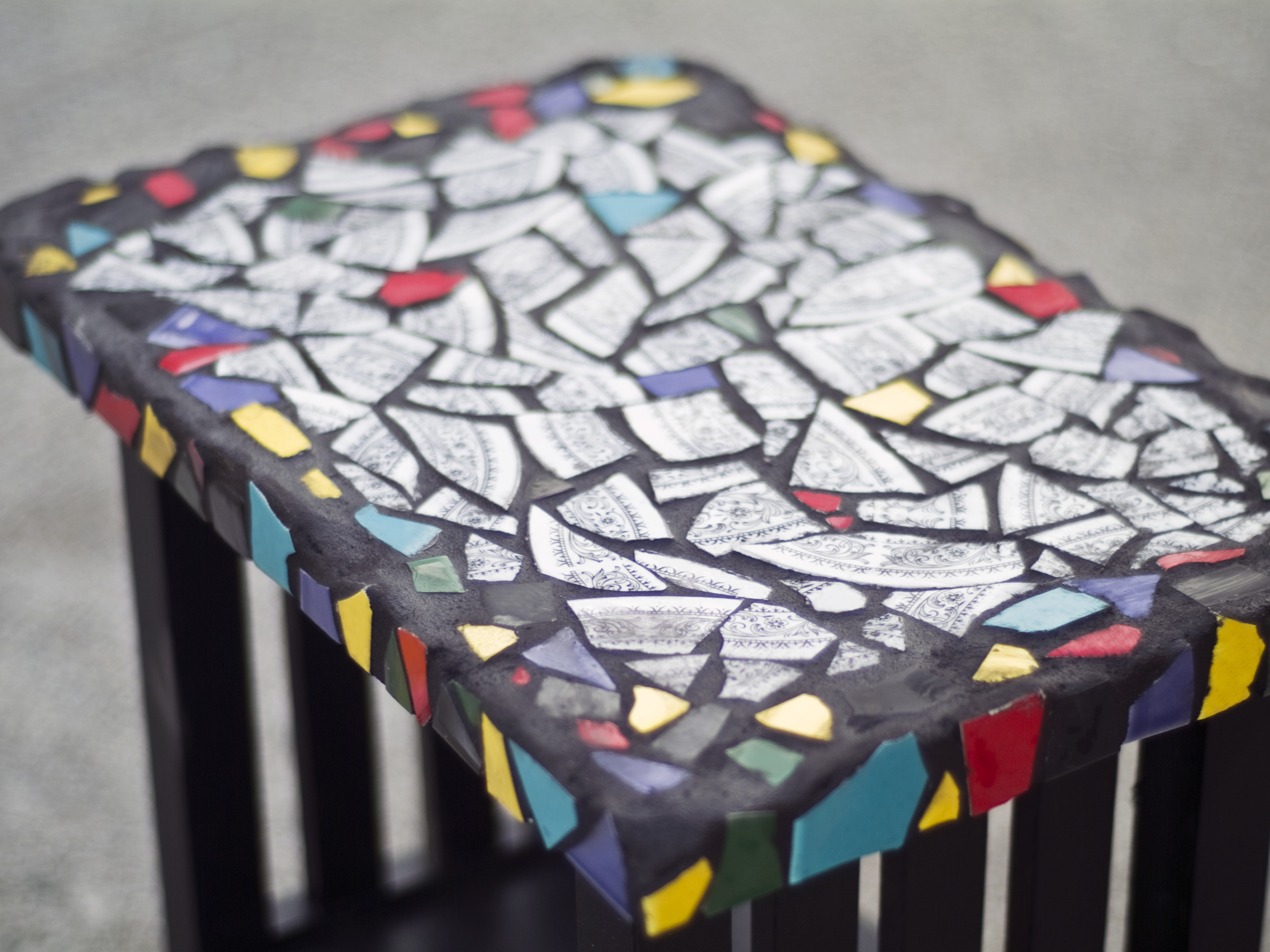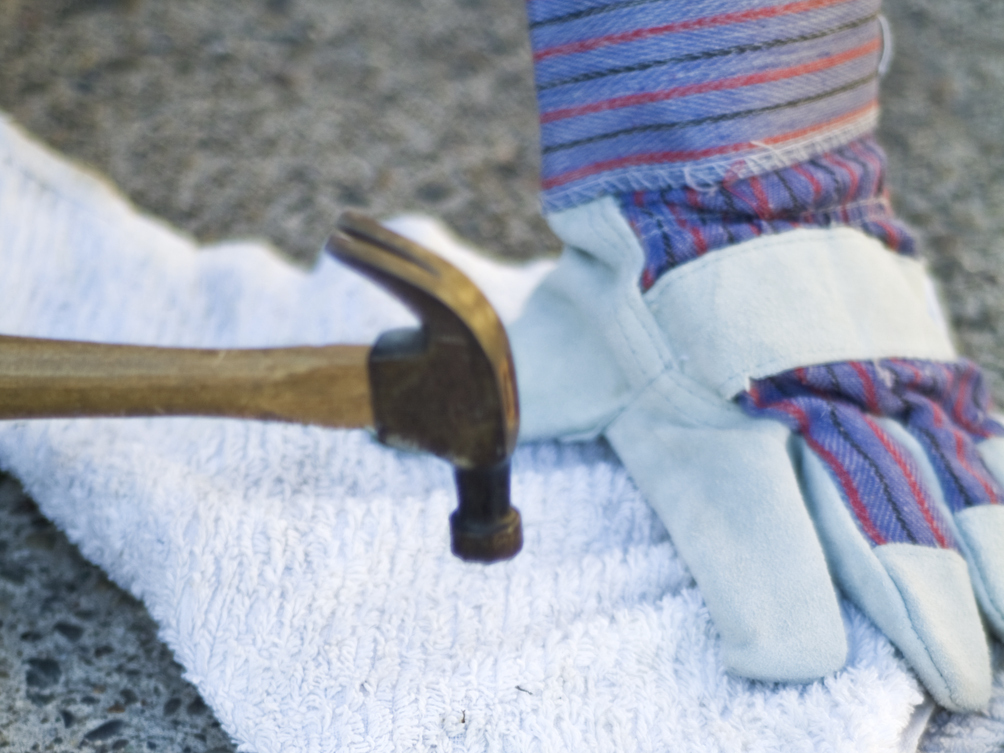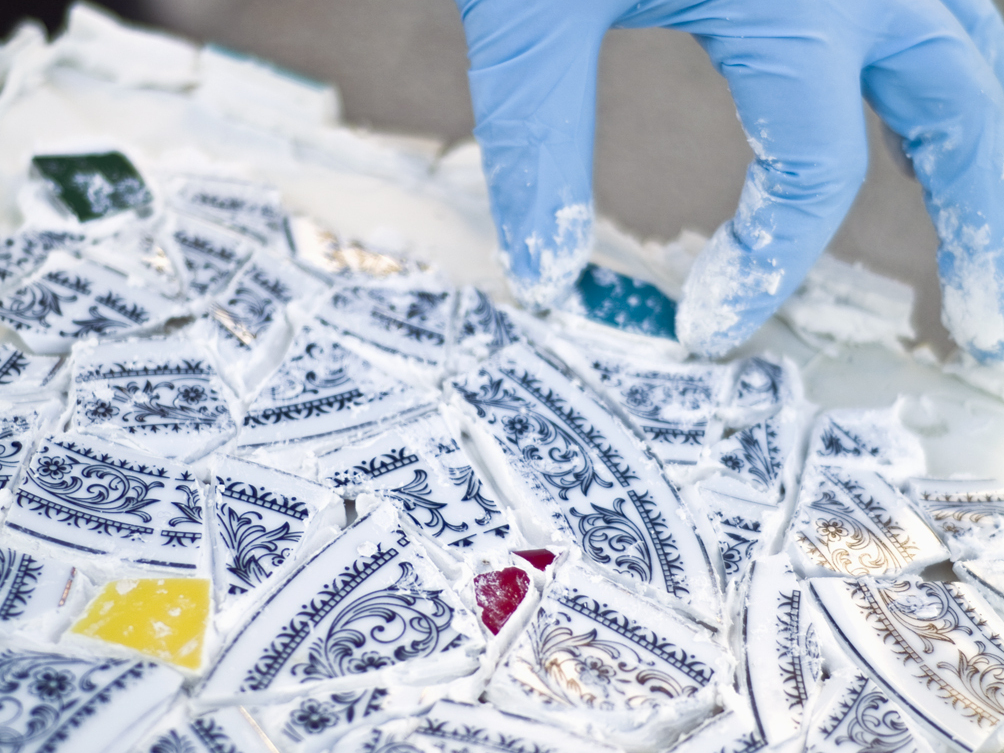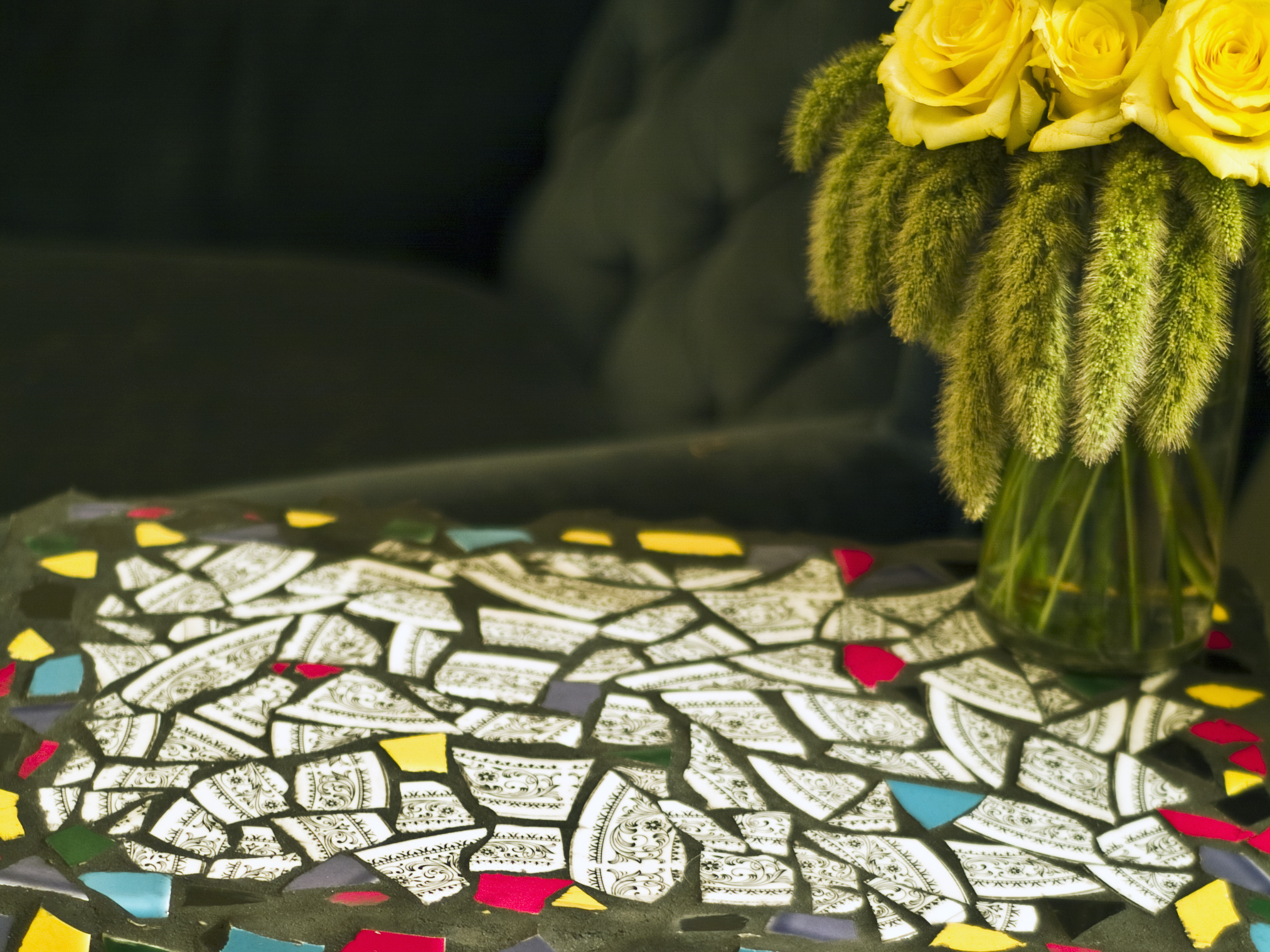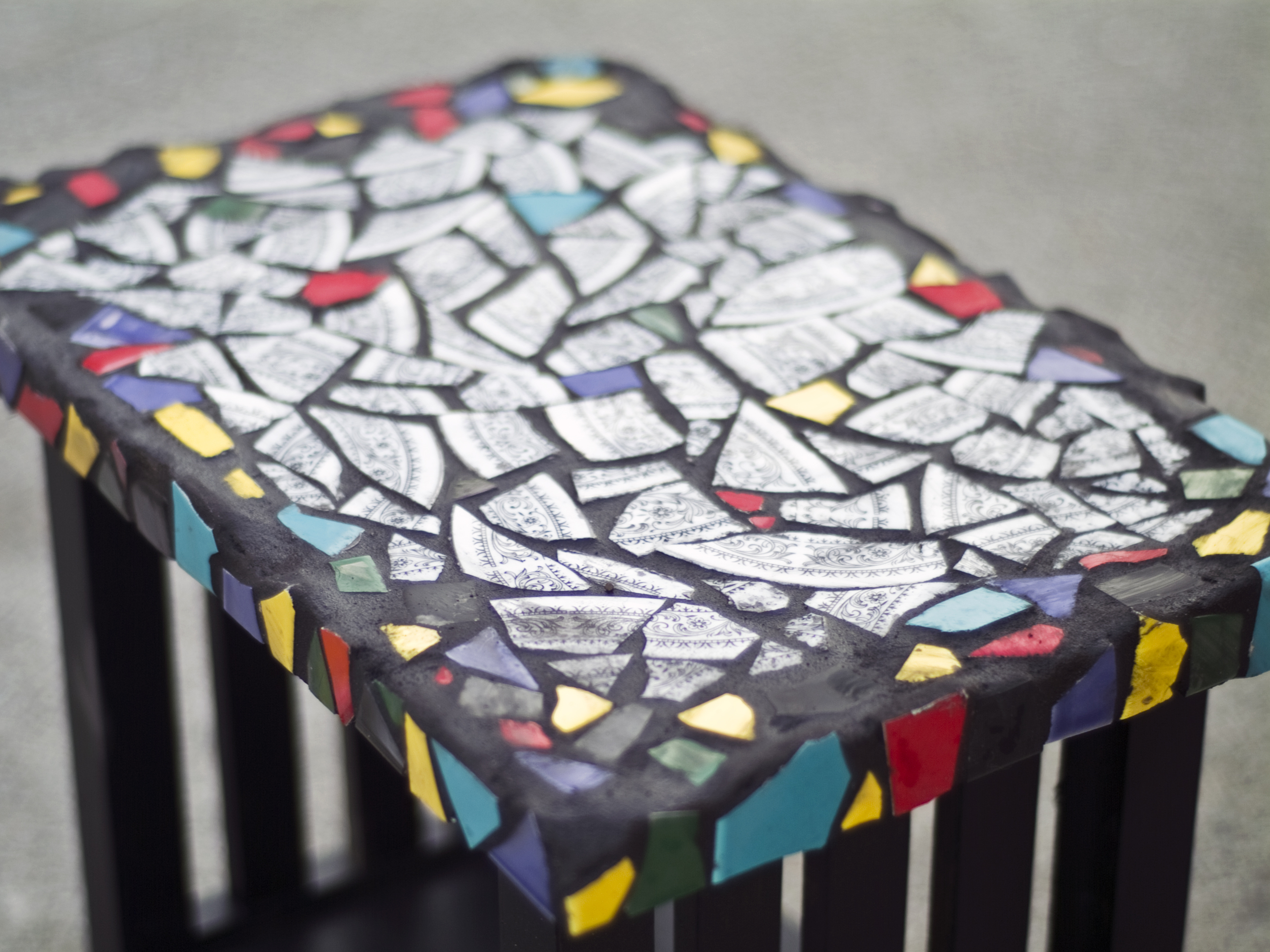Historically, Roman and Byzantine tesserae were smalti: opaque glass cubes that were cut with a chisel. Other tesserae included small pebbles, coins, and mirrors. For this project, we’ll make the tesserae by breaking up larger ceramic tiles and old plates. There is no perfect method for creating tesserae — while you can get pretty close most of the time to the shape you want, there’s always an element of surprise when breaking things. If you’re using glass, it can be scored with a glass cutter to increase the chance the glass will break along a particular line. Mosaic glass cutters are useful
To prevent the pieces from flying through the air with great force, wrap the dish to be broken in an old rag. With the heavier hammer, hit the plate once in the center, through the rag. Check to see how the pieces look. If you’d like to make them flatter, or to achieve a specific look, rewrap them in the towel and use the lighter hammer to chip away at them.
Breaking ceramic tile is similar to breaking plates, with a few differences. Some tiles, when hit with a hammer, tend to crack into perfect pieces, while others crumble away. This has to do with the tile itself, but you can adjust your breaking technique if you notice the tiles are crumbling. Set the tile on top of a hammerhead, drape it with a rag, then gently hit it with another hammer. Breaking tiles over a fulcrum like this will give you greater control over the final pieces, and should cause a good crack, instead of a bad crumble.
Once you’ve broken the tile into pieces, it can be broken down further using tile nippers. Place a piece of tile in the nippers, cover it with a rag, and then squeeze the nippers. They will break the tile fairly accurately every time. Tile nippers are invaluable for creating (mostly) square tesserae.


